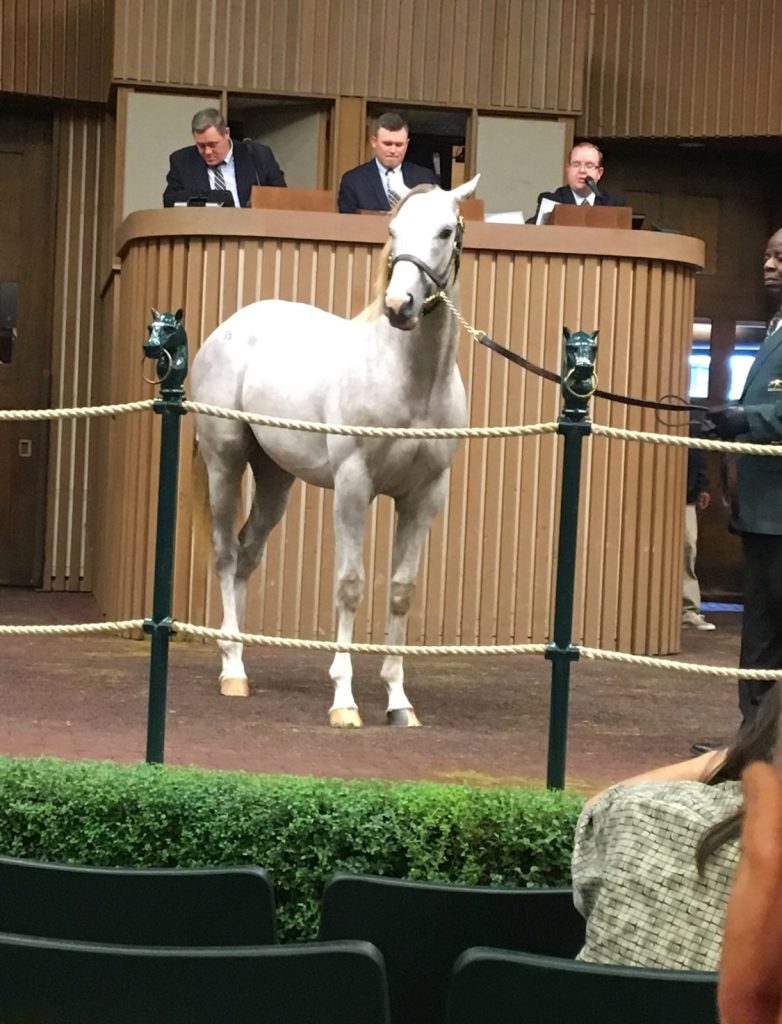
Pinhooking what exactly is it and why do people do it?
The game of horse auctions/ breeding sales is not always as straightforward as horses just being sold for profit. It often will involve a buyer/investor who spot horses based on pedigree and confirmation for future development. This is the profession of pinhooking.
Pinhooking is done at a few levels,a person buys a weanling and develops them along until they are a yearling. The most ideal way to do this is to select a really forward looking weanling. The earlier the foaling date the better. Should you bring a late foal to the yearling sale you may get dinged because it would be a late developer. The only way you wouldn’t suffer financial setbacks is if the pedigree is that good. The prospective clients your selling that yearling to most likely is pinhooking as well. That buyer would be someone who has the skill to develop this horse into a race ready prospect. You are bringing your yearling to the sales in hopes to make more money than what it cost you to originally purchase, feed and upkeep of the weanling and this is paramount to staying in business.
The next level of pinhooking as discussed in the previous paragraph would be purchasing a yearling which would involve a much higher investment than a weanling purchase, the development in this area of pinhooking is much different and is also termed yearling to juvenile pinhooking.
Profitability and rate of return are figured using the same formula. A pinhooked juvenile is considered profitable if its net 2-year-old price price minus a 5% sale company commission exceeds the yearling sale price plus $20,000 for expenses such as breaking, training, and general upkeep. The rate of return is the percent difference between the net 2-year-old price and the yearling costs.
Pinhooking a yearling to juvenile involves much more in the way of conformation, quality of the breeding, popularity of the stallion/family and heavy emphasis on the physical performance. Yearling to juvenile pinhooking involves a lot of patience, you need to know how to develop speed in a juvenile so that when it comes time for the sale, they show it then. A good showing at a 2 yo in training sale will yield higher profits. These are considered “race ready” two-year olds in training.
The term “pinhooking” originated in the old Kentucky tobacco industry. Farmers would sell younger tobacco plants and speculators would purchase the younger crop to continue to cultivate themselves. After the plant matured to the next stage, the speculator would sell it for profit. Thus, the term had turned towards the horseracing industry.
The risks of pinhooking can be volatile. Injuries, horses not developing the right way and having a less than ideal stature and last but not certainly least not performing exceptionally well at the breezing show. Several things are looked at in a breezing show such as, reach, fluid stride, confirmation, good radiographs and fast blazing breeze times.
If you manage to master those categories with your pinhooking prospect, chances are you may have a hefty profit coming your way. Adversely should you have issues, the time you invested, the money laid out for the purchase of the horse and the money spent to feed and care for that horse are reduced or gone. Some of the more well known 2 yo in training sales are Barretts March, OBS March, and OBS April sales.
Pinhooking is an art. It takes skill to evaluate the potential in a horse that is too young to even set a hoof on the racetrack from a weanling standpoint. Once the horse is bought, the real work begins to mold a champion racer for the next auction season. Fortunes have been made and lost in the business of pinhooking. The attractiveness to the business is the rush of money one can make if your successful.



